Off the Shelf #13
Shadow of the Minaret: LGBT People in the Islamic World
by Rob Ridinger
The place of people who are drawn to their own gender in those societies whose religious ethics and legal structures are based upon the faith of Islam is not a part of LGBT studies that is familiar to many readers. The reasons for this range from a relative absence of programs in Middle Eastern studies at American universities, unfamiliarity with the codes of Islamic law and social conduct, and the small number of publications and websites containing data on LGBT members of these communities (and their histories and challenges) available in languages other than Arabic. Another point of difference is that historically there has been no one term used in Islamic societies to refer to what in western eyes would be termed an LGBT social identity, Arabic rather centering its linguistic attention on specific actions. Specific prohibitions of homosexual acts are present in the Qur’an and the Hadith (the body of collected sayings of wisdom of the Prophet Muhammad).
The American publications issued by the homophile movement prior to Stonewall occasionally carried news stories pertaining to the status of homosexuals in countries where Islam was the dominant religion. An early example of this is an entry in the news column “Cross Currents” in the October 1966 issue of The Ladder, the monthly magazine issued by the Daughters of Bilitis. It recounted the execution of one Ahmad el-Osamy, convicted of homosexuality, sixty years of age, by firing squad in the public square of the capital of Yemen, Sana’a, before a crowd of some six thousand people. The item noted that this was the first such execution to be carried out in Yemen for this crime. Following the overthrow of the Shah of Iran in 1979 and the establishment of an Islamic republic under the Ayatollah Khomeini The ADVOCATE also carried several news reports of the execution of homosexuals, although in some cases homosexuality was only one of a number of charges made against the accused and it is not clear whether all the persons involved actually were gay men.
In the 1980s, the two Pink Books produced by the International Gay 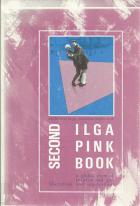 Association/International Gay and Lesbian Association have data on the legal and social status of homosexuality by nation when available, and some essays offering country studies. The Second ILGA Pink Book: A Global View of Lesbian and Gay Liberation and Oppression, issued in 1988, contains an article by Jale Simsek entitled “Turkey: A Country with a Long Homosexual History.” The Second Pink Book also presents data on homosexuality in the section on “Asia,” giving for each nation information on official attitudes and the law and the way homosexuality was regarded among the population at that time. Nations for which data is provided are Bahrain, Bangladesh, Indonesia, Iran, Iraq, Kuwait, Malaysia, Oman, Pakistan, Qatar, Saudi Arabia, Syria, Turkey, and the United Arab Emirates. In almost every case, homosexuality is either not mentioned in the nation’s penal code or reference is made to Islamic law- the one exception was Iraq, where homosexual acts were not considered illegal at the time the Second Pink Book was compiled. The emerging reference literature on homosexuality also provided coverage of Islam. In 1990, Maarten Schild contributed an article on “Islam” to the two-volume Encyclopedia of Homosexuality edited by Wayne R. Dynes.
Association/International Gay and Lesbian Association have data on the legal and social status of homosexuality by nation when available, and some essays offering country studies. The Second ILGA Pink Book: A Global View of Lesbian and Gay Liberation and Oppression, issued in 1988, contains an article by Jale Simsek entitled “Turkey: A Country with a Long Homosexual History.” The Second Pink Book also presents data on homosexuality in the section on “Asia,” giving for each nation information on official attitudes and the law and the way homosexuality was regarded among the population at that time. Nations for which data is provided are Bahrain, Bangladesh, Indonesia, Iran, Iraq, Kuwait, Malaysia, Oman, Pakistan, Qatar, Saudi Arabia, Syria, Turkey, and the United Arab Emirates. In almost every case, homosexuality is either not mentioned in the nation’s penal code or reference is made to Islamic law- the one exception was Iraq, where homosexual acts were not considered illegal at the time the Second Pink Book was compiled. The emerging reference literature on homosexuality also provided coverage of Islam. In 1990, Maarten Schild contributed an article on “Islam” to the two-volume Encyclopedia of Homosexuality edited by Wayne R. Dynes.
The last decade of the twentieth century witnessed the publication of a group of monographs in English discussing aspects of being LGBT in Islamic cultures that mark the beginning of such literature within contemporary LGBT studies. The first of these appeared in 1992 Sexuality and Eroticism among Males in Moslem Societies from Harrington Park Press- a collection of essays edited by Arno Schmitt (who also contributed two chapters). Subjects explored range from Muslim law and its treatment of sodomy to critical evaluation of historian John Boswell’s writings on gay Muslims and discussion aspects of then-current gay life in countries as diverse as Syria, Pakistan, Turkey, Iran and Morocco. The other relevant title published in 1992, Coming Out: An Anthology of International Gay and Lesbian Writings edited by Stephan Likosky, has a chapter on “Homosexuality in the Arab and Moslem World” written by gay journalist Rex Wockner which previously appeared in several LGBT newspapers in the United States and Great Britain.
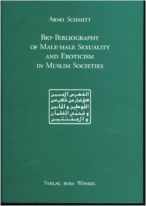 1995 was marked by the publication in Berlin of the only print attempt to date at assembling a bibliography of the scattered literature on men who have sex with men in the context of Islam. The Bio-bibliography of Male-Male Sexuality and Eroticism in Muslim Societies was compiled by Arno Schmitt and contains introductory text in German, English and French, with a parallel title in Arabic. In the English language section of the front matter, Schmitt reports that his intention with assembling this volume is to “not only further the study of male-male erotism in the Muslim core area, but also the study of attitudes of easterner and Westerners toward it” (Schmitt 1995:14). The contents of this immensely detailed unannotated listing include books, articles (in some 420 journals, including such standard LGBT sources as The Mattachine Review, The ADVOCATE, and The Body Politic), photographs, radio broadcasts, paintings, drawings and films. Source languages covered include English, French, German, Dutch, and Italian as well as Arabic, with time frame ranging from the sixteenth to the twentieth
1995 was marked by the publication in Berlin of the only print attempt to date at assembling a bibliography of the scattered literature on men who have sex with men in the context of Islam. The Bio-bibliography of Male-Male Sexuality and Eroticism in Muslim Societies was compiled by Arno Schmitt and contains introductory text in German, English and French, with a parallel title in Arabic. In the English language section of the front matter, Schmitt reports that his intention with assembling this volume is to “not only further the study of male-male erotism in the Muslim core area, but also the study of attitudes of easterner and Westerners toward it” (Schmitt 1995:14). The contents of this immensely detailed unannotated listing include books, articles (in some 420 journals, including such standard LGBT sources as The Mattachine Review, The ADVOCATE, and The Body Politic), photographs, radio broadcasts, paintings, drawings and films. Source languages covered include English, French, German, Dutch, and Italian as well as Arabic, with time frame ranging from the sixteenth to the twentieth 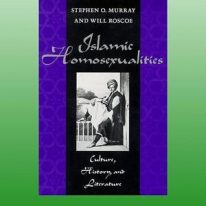 centuries. A useful item in the short introductory essay “Male-Male Sexuality in Muslim Society” is Schmitt’s discussion of five separate terms in Arabic which are applied to homosexual actions. The decade closed with the appearance in 1997 of the anthology Islamic Homosexualities: Culture, History, and Literature edited by Stephen O Murray and Will Roscoe. Its twenty-one contributed papers approach homosexuality in the Islamic world from the perspectives of anthropology and history, using sources as diverse as literature, ethnographic accounts, documents from a variety of historical eras and countries and observations by both Muslims and non-Muslims.
centuries. A useful item in the short introductory essay “Male-Male Sexuality in Muslim Society” is Schmitt’s discussion of five separate terms in Arabic which are applied to homosexual actions. The decade closed with the appearance in 1997 of the anthology Islamic Homosexualities: Culture, History, and Literature edited by Stephen O Murray and Will Roscoe. Its twenty-one contributed papers approach homosexuality in the Islamic world from the perspectives of anthropology and history, using sources as diverse as literature, ethnographic accounts, documents from a variety of historical eras and countries and observations by both Muslims and non-Muslims.
The three major reference works in LGBT studies which appeared in 2000, Gay Histories and Cultures edited by George E. Haggerty, Lesbian Histories and Cultures edited by Bonnie Zimmerman, and the Reader’s Guide to Lesbian and Gay Studies edited by Timothy F. Murphy, each have entries covering Islam and Islamic law and culture. But the first major book of the new decade to deal with this topic takes a broader historical view, Khaled el- Rouayheb’s Before Homosexuality in the Arab-Islamic World: 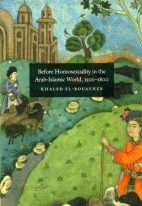 1500-1800, published in 2005 by the University of Chicago Press (and reissued in 2009). The author draws upon textual sources as varied as the Qur’an to challenge the idea that homosexual behavior is a generally present concept to which different cultures respond, making a case for the absence of the concept over three centuries. 2006 saw the publication of Unspeakable Love: Gay and
1500-1800, published in 2005 by the University of Chicago Press (and reissued in 2009). The author draws upon textual sources as varied as the Qur’an to challenge the idea that homosexual behavior is a generally present concept to which different cultures respond, making a case for the absence of the concept over three centuries. 2006 saw the publication of Unspeakable Love: Gay and 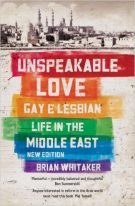 Lesbian Life in the Middle East by journalist Brian Whitaker. Through personal interviews, exploration of Arab films and novels where homosexuality is a plot element, and a comparison of Muslim, Christian and Jewish sanctions on sexuality, this volume presents an accessible picture of some of the main trends generated by and impacting on LGBT people across the region (an expanded edition would be issued in 2011). Similar in tone is the 2007 collection Gay Travels in the Muslim World edited by Michael Luongo, which originated in a pool of articles sent to the editor for another project. Its opening essay “Homosexuality and Coverage of the Muslim World” presents a thoughtful look at how Muslims are and have been regarded in the United States and some of the ways in which gay identities are interwoven with recent political events. The chapter authors include both Muslims and non-Muslims, with a geographical range from Morocco to Afghanistan and India. The relative absence of information on same-sex relationships between women was addressed by Australian scholar Samar Habib in Female Homosexuality in the Middle East: Histories and Representations, and, in the reference literature, Homosexuality and Religion: An Encyclopedia, published by Greenwood Press in 2007 which contains an article by Elyse Semerdjian on “Islam.” The next work to appear in this decade was an anthology of papers from historians, literary scholars, and theorists of sexuality: Islamicate Sexualities: Translations Across Temporal Geographies of Desire edited by Kathryn Babayan and Afsaneh Najmabad, published in 2008 by the Center for Middle Eastern Studies of Harvard University. The collective purpose of this volume is to present a challenging dialogue between the ways in which sexuality is being rethought by scholars in America and Europe and its examination within Middle Eastern studies for a period ranging from the tenth century to contemporary times.
Lesbian Life in the Middle East by journalist Brian Whitaker. Through personal interviews, exploration of Arab films and novels where homosexuality is a plot element, and a comparison of Muslim, Christian and Jewish sanctions on sexuality, this volume presents an accessible picture of some of the main trends generated by and impacting on LGBT people across the region (an expanded edition would be issued in 2011). Similar in tone is the 2007 collection Gay Travels in the Muslim World edited by Michael Luongo, which originated in a pool of articles sent to the editor for another project. Its opening essay “Homosexuality and Coverage of the Muslim World” presents a thoughtful look at how Muslims are and have been regarded in the United States and some of the ways in which gay identities are interwoven with recent political events. The chapter authors include both Muslims and non-Muslims, with a geographical range from Morocco to Afghanistan and India. The relative absence of information on same-sex relationships between women was addressed by Australian scholar Samar Habib in Female Homosexuality in the Middle East: Histories and Representations, and, in the reference literature, Homosexuality and Religion: An Encyclopedia, published by Greenwood Press in 2007 which contains an article by Elyse Semerdjian on “Islam.” The next work to appear in this decade was an anthology of papers from historians, literary scholars, and theorists of sexuality: Islamicate Sexualities: Translations Across Temporal Geographies of Desire edited by Kathryn Babayan and Afsaneh Najmabad, published in 2008 by the Center for Middle Eastern Studies of Harvard University. The collective purpose of this volume is to present a challenging dialogue between the ways in which sexuality is being rethought by scholars in America and Europe and its examination within Middle Eastern studies for a period ranging from the tenth century to contemporary times.
The next work to appear in 2008 was a collection of the life stories of thirty-three men and women from twenty-two countries gathered by Somali- born American writer Afdhere Jama, who at the time was the editor of Huriyah (a magazine and later a website) for LGBT Muslims worldwide. Countries represented in Illegal Citizens Queer Lives in the Muslim World 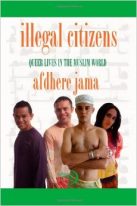 range across the world from Indonesia, Saudi Arabia, and India to Nigeria, Egypt, and Bosnia. And the English translation of The Dictionary of Homophobia: A Global History of Gay and Lesbian
range across the world from Indonesia, Saudi Arabia, and India to Nigeria, Egypt, and Bosnia. And the English translation of The Dictionary of Homophobia: A Global History of Gay and Lesbian 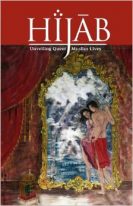 Experience, issued in 2008 by Arsenal Pulp Press in Vancouver, B.C., includes an essay by Christelle Hamel on “Islam.” The decade closed with the publication of Rita Simon’s survey volume Gay and Lesbian Communities The World Over in 2009, which includes a chapter on “Islam and Homosexuality” and data on Israel, Egypt, Iran, and Nigeria. South Africa also contributed to the literature on LGBT people within Islam with the first known collection of biographies and autobiographies (told in creative writing style) of Muslim citizens in Hijab: Unveiling Queer Muslim Lives published in Cape Town by Inner Circle.
Experience, issued in 2008 by Arsenal Pulp Press in Vancouver, B.C., includes an essay by Christelle Hamel on “Islam.” The decade closed with the publication of Rita Simon’s survey volume Gay and Lesbian Communities The World Over in 2009, which includes a chapter on “Islam and Homosexuality” and data on Israel, Egypt, Iran, and Nigeria. South Africa also contributed to the literature on LGBT people within Islam with the first known collection of biographies and autobiographies (told in creative writing style) of Muslim citizens in Hijab: Unveiling Queer Muslim Lives published in Cape Town by Inner Circle.
The current decade has witnessed the continuation of research on homosexuality in Muslim culture from a diverse array of sources ranging from international organizations to periodicals, reference works, websites, and dissertations. The first of these is the report “We Are a Buried Generation”: Discrimination and Violence against Sexual Minorities in Iran, issued in December 2010 in New York by Human Rights Watch. The report is based on interviews with 125 LGBT people within and outside Iran done over a period of five years and begins with sections setting forth basic human rights as defined under international law and the ways in which sexual minorities are regarded and treated by the Iranian legal code, judicial system (up to and including the death penalty) and security forces. Of particular note are the chapters on lesbian and bisexual women and transgender and transsexual people. A list of recommendations to the government of Iran, United Nations High Commission for Refugees, and the governments of nations which have received Iranian refugees are included. The full text of the document is accessible online at https://www.hrw.org/report/2010/12/15/we-are-buried-generation/discrimination-and-violence-against-sexual-minorities. In addition to the Human Rights Watch report, 2010 also saw the appearance of two volumes of articles and essays illustrating the expanding open discussion of the condition of LGBT people in classic and contemporary Muslim 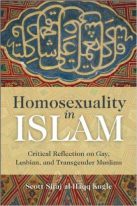 societies: Homosexuality in Islam: Critical Reflection on Gay, Lesbian and Transgender Muslims by Scott Kugle, and Samar Habib’s two-volume collection Islam and Homosexuality. Kugle’s volume is done from a theological perspective and explores within the theology of Islam the
societies: Homosexuality in Islam: Critical Reflection on Gay, Lesbian and Transgender Muslims by Scott Kugle, and Samar Habib’s two-volume collection Islam and Homosexuality. Kugle’s volume is done from a theological perspective and explores within the theology of Islam the 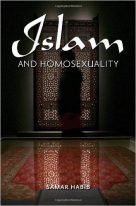 teachings of the Qur’an, the hadith, shari’a law and fatwa politics as they have treated or relate to LGBT people and their identities as Muslims. The two volumes of Islam and Homosexuality contain twenty papers assessing a wide range of topics ranging from the Hajj (the pilgrimage to Mecca all Muslims hope to make) and issues of acceptance (both cultural and theological) to experiences drawn from the Muslim diaspora. The LGBT reference pool was also expanded in 2010 by the Greenwood Encyclopedia of LGBT Issues Worldwide, which contains articles on Iran, Lebanon and Saudi Arabia. In the periodical literature, 2012 saw the publication of a special issue of the Journal of Lesbian Studies on the theme of Lesbians, Sexuality, and Islam, while the Fordham international Law Journal for November 2013 had a lengthy article entitled “Is Green a Part of the Rainbow?: Sharia, Homosexuality, and LGBT Rights In The Muslim World.” The title refers to the status historically accorded the color green within Islam, as the tribe of the Prophet had a green banner (as do the nations of Pakistan and Saudi Arabia today) and as the color associated with the inhabitants of paradise in the Qur’an.
teachings of the Qur’an, the hadith, shari’a law and fatwa politics as they have treated or relate to LGBT people and their identities as Muslims. The two volumes of Islam and Homosexuality contain twenty papers assessing a wide range of topics ranging from the Hajj (the pilgrimage to Mecca all Muslims hope to make) and issues of acceptance (both cultural and theological) to experiences drawn from the Muslim diaspora. The LGBT reference pool was also expanded in 2010 by the Greenwood Encyclopedia of LGBT Issues Worldwide, which contains articles on Iran, Lebanon and Saudi Arabia. In the periodical literature, 2012 saw the publication of a special issue of the Journal of Lesbian Studies on the theme of Lesbians, Sexuality, and Islam, while the Fordham international Law Journal for November 2013 had a lengthy article entitled “Is Green a Part of the Rainbow?: Sharia, Homosexuality, and LGBT Rights In The Muslim World.” The title refers to the status historically accorded the color green within Islam, as the tribe of the Prophet had a green banner (as do the nations of Pakistan and Saudi Arabia today) and as the color associated with the inhabitants of paradise in the Qur’an.
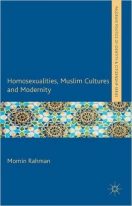 2014 witnessed the publication of three important books whose contents further the discussion of LGBT people and their place within Islam. In Homosexualities, Muslim Cultures and Modernity, author Momin Rahman presents an interdisciplinary study of the question within the concept of modernization as seen from sociology, political science, international development and other social sciences. In his introduction, Rahman states that “the assumed mutual exclusivity of queerness and Muslim and/or Asian cultures is the personal and analytical impetus for this study” (Rahman 2014:2). During the period from 1995 to 2014, the author of the next work, Sofian
2014 witnessed the publication of three important books whose contents further the discussion of LGBT people and their place within Islam. In Homosexualities, Muslim Cultures and Modernity, author Momin Rahman presents an interdisciplinary study of the question within the concept of modernization as seen from sociology, political science, international development and other social sciences. In his introduction, Rahman states that “the assumed mutual exclusivity of queerness and Muslim and/or Asian cultures is the personal and analytical impetus for this study” (Rahman 2014:2). During the period from 1995 to 2014, the author of the next work, Sofian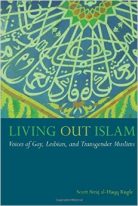 Merhabet, made a series of journeys into Lebanon and interviewed many gay men in the city of Beirut, exploring how they formulated their sense of identity and gender. The result of his fieldwork was the groundbreaking ethnography Queer Beirut, the first such study done in the Middle East. Scott Kugle augmented the number of personal accounts in 2014 with Living Out Islam: Voices of Gay, Lesbian, and Transgender Muslims. It received the Israel Fishman Award from the GLBT Round Table of the American Library Association in 2015.
Merhabet, made a series of journeys into Lebanon and interviewed many gay men in the city of Beirut, exploring how they formulated their sense of identity and gender. The result of his fieldwork was the groundbreaking ethnography Queer Beirut, the first such study done in the Middle East. Scott Kugle augmented the number of personal accounts in 2014 with Living Out Islam: Voices of Gay, Lesbian, and Transgender Muslims. It received the Israel Fishman Award from the GLBT Round Table of the American Library Association in 2015.
2015 also saw the completion of a groundbreaking dissertation in the Department of Near Eastern Languages and Cultures at Indiana University, Sexual Intifada Now! Postcolonial Arab LGBTIQ Activism. In his abstract, author Jedidiah Anderson states the topic of his fieldwork to be “the impact of colonialism on how LGBTIQ (lesbian, gay, bisexual, transgendered, intersex, and queer) conceive of their identities and how this has shaped LGBTIQ activism in the Arab World” (Anderson 2015: v). He further notes the historical view of homosexuality in the region as a group of actions which anyone might engage in, as opposed to the contemporary concept of an identity, and eloquently offers the following thoughtful challenges:
This understanding of homosexuality would seem to preclude LGBTIQ rights activism organized around the concept of sexuality as an identity. However, in recent years official and unofficial groups in the Arab World have sprung up around that very concept, most notably in Lebanon and the Palestinian Territories. Additionally, Western-based groups and Arabs living in the West have been engaging in activism on behalf of LGBTIQ individuals in the Arab World, most notably in Iraq. ……..does this activism come from a new understanding of sexual identity in the Arab World, or is it the result of imposition of Western sexual norms on the Arab World? Also, if homosexuality is now understood as an identity, rather than as an aggregate of acts in the Arab World, is that wholly the result of Western influence, or rather a localized response to oppression in the Arab World? Furthermore, how has this shift in the understanding of homosexuality in the Arab World affected local LGBTIQ rights activism? The bulk of my research consists of interviews with activists in Lebanon, Iraq, and the Palestinian Territories. At this moment, almost no scholarship deals with the state of LGBTIQ rights in the contemporary Arab World. Current journalism similarly fails to address the state of LGBTIQ activists in the Arab World. Instead of documenting LGBTIQ activists’ efforts to improve their conditions, western media usually portrays them merely as oppressed victims (Anderson 2015: v).
Online resources have also been part of the landscape for LGBT Muslims worldwide from the creation of the Internet and the access it provided for networking. Three websites will serve to illustrate the range of data available for researchers and the general public. www.Al-bab.com was founded in February 1998 as a Yemen-specific site; it takes its name from the Bab al-Yemen, a famous gateway in the old city of Sana’a, but over time has added information from a wide array of subjects on the Muslim world. Its detailed section of links on “Society and Politics” has a category for “Gay/Lesbian” covering a range of contact data for organizations, religious groups, asylum and immigration, Arab fiction and film, newsfeeds and blogs. The Huriyah blog at http://huriyahmag.blogspot.com contains the full text back file of a well-known queer Muslim magazine founded in San Francisco in 2000, which appeared for its first two years exclusively in Arabic and only added an English edition in January 2002. A history of Huriyah is online as well at http://alt.religion.islam.narkive.com/ry7ORbI5/huriyah-a-queer-muslim-magazine. Lastly, the South African website of The Inner Circle tells the history of a Muslim support group founded in 1996: http://theinnercircle.org.za/previous/.
The conflict over homosexuality in the Muslim world is a continuing thread of contemporary time, with activism often being met with severe reprisals, such as the brutal murder in April 2016 of Xulhaz Mannan, the editor of the first LGBT newspaper in Bangladesh, where the terrorist group Al-Qaeda claimed responsibility. The starkness of such events makes it all the more vital that the voices of LGBT Muslims be sought out and placed on our shelves , both to recognize their presence in our patron populations and to educate non-Muslims accurately on the strengths and wisdoms of the faith of Islam.
References
al-bab.com
“Al-Qaeda Says It Killed Bangladesh Gay Activist, Friend.” http://www.chicagotribune.com/news/nationworld/ct-bangladesh-stabbings-20160426-story.html Accessed April 25 2016.
Anderson, Jedidiah. Sexual Intifada Now! Postcolonial Arab LGBTIQ Activism. Ph.D dissertation, Indiana University, 2015.
Anwar, Ghazala. “Islam” in Lesbian Histories and Cultures edited by Bonnie Zimmerman. New York: Garland, 2000: 403-405.
“Bangladesh LGBT Editor Hacked To Death” http://www.bbc.com/news/world-asia-36128729 Accessed April 24, 2016.
Aultman , Brandon H. “Iran” in Greenwood Encyclopedia of LGBT Issues Worldwide edited by Chuck Stewart. Santa Barbara, California: ABC-CLIO. 2010: 163-173.
Coming Out: An Anthology of International Gay and Lesbian Writings edited by Stephan Likosky, New York: Pantheon Books, 1992.
“Cross Currents.” The Ladder 11, 1 (October 1966): 24.
El-Rouayheb, Khaled. Before Homosexuality in the Arab-Islamic World: 1500-1800. Chicago: University of Chicago Press, 2005.
Gay Histories and Cultures edited by George E. Haggerty. New York, Garland, 2000.
Gay Travels in the Muslim World edited by Michael Luongo. New York : Harrington Park Press, 2007.
“Green in Islam.” https://en.wikipedia.org/wiki/Green_in_Islam#References. Accessed April 29 2016.
Habib, Samar. Female Homosexuality in the Middle East: Histories and Representations. New York: Routledge, 2007.
Halwani, Raja. “Islam” in Reader’s Guide to Lesbian and Gay Studies edited by Timothy F. Murphy. Chicago: Fitzroy Dearborn, 2000: 309-311.
Huriyah. http://huriyahmag.blogspot.com. Accessed April 29 2016.
The Inner Circle http://theinnercircle.org.za/previous/ . Accessed April 29 2016.
Islam and Homosexuality edited by Samar Habib. Santa Barbara, California: Praeger, 2010.
Islamic Homosexualities: Culture, History, and Literature edited by Stephen O Murray and Will Roscoe. New York: New York University Press, 1997.
Jama, Afdhere. “Huriyah: A Queer Muslim Magazine.” http://alt.religion.islam.narkive.com/ry7ORbI5/huriyah-a-queer-muslim-magazine. Accessed April 29 2016.
Journal of Lesbian Studies Special Issue: Lesbians, Sexuality, and Islam edited by Huma Ahmed-Ghosh and Shawna Held. v, 16, n.4 , Philadelphia, PA: Routledge/Taylor & Francis Group, 2012.
Kugle, Scott Siraj al-Haqq. Homosexuality In Islam: Critical Reflection On Gay, Lesbian and Transgender Muslims. Oxford : Oneworld, 2010.
Kugle, Scott Siraj al-Haqq. Living Out Islam: Voices of Gay, Lesbian, and Transgender Muslims. New York: NYU Press, 2014.
Lesbian Histories and Cultures edited by Bonnie Zimmerman. New York: Garland, 2000.
Merabet, Sofian. Queer Beirut. Austin, TX : University of Texas Press, 2014.
Rahman, Momin. Homosexualities, Muslim Cultures And Modernity. [Basingstoke]: Palgrave Macmillan, 2014.
Reader’s Guide to Lesbian and Gay Studies edited by Timothy F. Murphy. Chicago: Fitzroy Dearborn, 2000.
Rehman, Javaid and Eleni Polymenopoulou. “Is Green a Part of the Rainbow?: Sharia, Homosexuality, and LGBT Rights in the Muslim World.” Fordham international Law Journal Volume 37, number 1 (November 2013): 1-52.
Sanei, Faraz “We are a buried generation”: discrimination and violence against sexual minorities in Iran New York, NY : Human Rights Watch, 2010.
Sandels, Alexandra and Nadine Moawad. “Lebanon” in Greenwood Encyclopedia of LGBT Issues Worldwide edited by Chuck Stewart. Santa Barbara California: ABC-CLIO. 2010: 175-192.
Schild, Maarten. “Islam” in Encyclopedia of Homosexuality edited by Wayne R. Dynes. New York: Garland, 1990: 615-620.
Schmitt, Arno. Bio-bibliography of Male-male Sexuality and Eroticism In Muslim Societies. Berlin: Verlag rosa Winkel, 1995.
Schmitt, Arno and Jehorda Sofer. Sexuality and Eroticism among Males in Moslem Societies. Binghamton, N.Y.: Harrington Park Press, 1992.
Semerdjian, Elyse. “ Islam“ in Homosexuality and Religion: An Encyclopedia edited by Jeffrey S. Siker. Westport, Connecticut: Greenwood Press, 2007: 128-133.
Shah, Shival. “Saudi Arabia.” in Greenwood Encyclopedia of LGBT Issues Worldwide edited by Chuck Stewart. Santa Barbara California: ABC-CLIO. 2010 :193-223.
Simon, Rita J. and Alison Brooks, Alison. Gay and Lesbian Communities The World Over. Lanham, MD: Lexington Books, 2009.
Simsek, Jale . “Turkey: A Country With a Long Homosexual History” in Second ILGA Pink Book: A Global View of Lesbian and Gay Liberation and Oppression. Utrecht: Interfacultaire Wekgroep Homostudies, Rijkuniversiteit Utrecht, 1988: 153-161.
Skjaervo, Prods Oktor, “Islam” in Gay Histories and Cultures edited by George E. Haggerty. New York, Garland, 2000: 478-480.
Whitaker, Brian. Unspeakable Love: Gay and Lesbian Life in the Middle East. Berkeley: University of California Press, 2006.
Whitaker, Brian. Unspeakable Love: Gay and Lesbian Life In the Middle East. New and updated edition. London: Saqi Books, 2011.
Wockner, Rex. “Homosexuality in the Arab and Moslem World” in Coming Out: An Anthology of international Gay and Lesbian Writings edited by Stephan Likosky. New York: Pantheon Books, 1992: 102-116.
Wolper, Ethel Sara. “Islamic Law and Culture” in Reader’s Guide to Lesbian and Gay Studies edited by Timothy F. Murphy. Chicago: Fitzroy Dearborn, 2000: 311-312.
Copyright R. Ridinger 2016


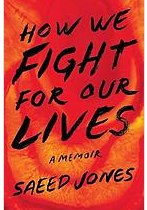
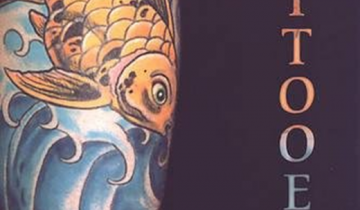
Hi, allow me to point out for the early years:
https://www.worldcat.org/title/kleine-schriften-zu-zwischenmannlicher-sexualitat-und-erotik-in-der-muslimischen-gesellschaft/oclc/833731557&referer=brief_results — there is a copy in Havard Lib
Everett Rowson: The Categorization of Gender and. Sexual Irregularity in Medieval Arabic Vice Lists. — now available as pdf from Havard Lib
Everett Rowson: The Effeminates of Early Medina
http://www.jstor.org/stable/603399?seq=1#page_scan_tab_contents
— free online (pay for download)
Arno Schmitt,Jehoeda Sofer (eds.)
Sexuality and Eroticism Among Males in Moslem Societies
Binghamton, NY: Haworth Press.1992
https://books.google.de/books?hl=de&lr=&id=Kw_BVSVmNsUC&oi=fnd&pg=PR9&dq=sofer+schmitt&ots=kp8lx3eOHr&sig=spX-fjj-nlXSstOyVjhHlfAnUMY#v=onepage&q=sofer%20schmitt&f=false
von